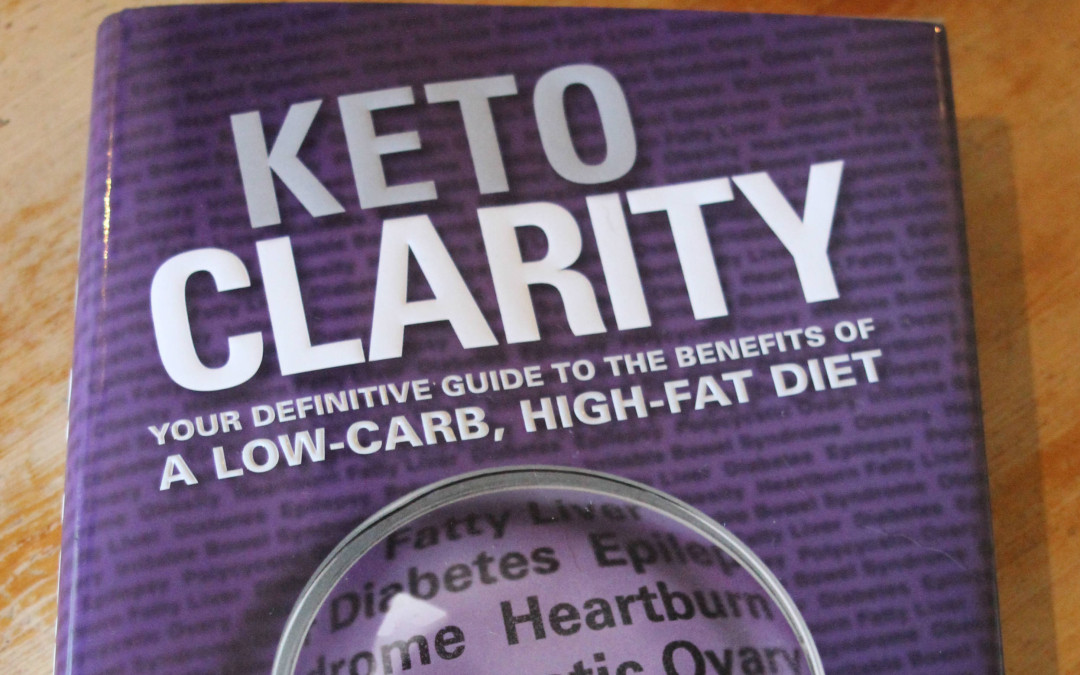
Tripping Over the Truth: The Metabolic Theory of Cancer by Travis Christofferson
Ninety years ago, a German scientist named Otto Walberg put forward a theory of cancer that was to radically alter the way we think about this devastating disease. However, a change in thinking would not happen immediately. It would take many years before his theory finally gained ground. In 2014 there is increasing attention being paid to the work of Otto Warburg and the implications his theory has for the prevention, cause and treatment of cancer.
‘Could we have mischaracterized the true nature of cancer?’
I have just finished reading Tripping Over the Truth by Travis Christofferson. As I closed the last page, I turned back to the first and started it again. That’s how riveting this book is.
I first heard about Travis via an article he posted on Robb Wolf called The Origin of Cancer last year. I thought it was one of the most fascinating articles* I had ever read and was keen to find out more about the Foundation for Metabolic Cancer Therapies, which Travis founded. I had also been interested in the work of Dr Colin Chapman, Professor Thomas Seyfried and Dr Dominic D’Agostino and their research into ketogenic diet therapies for cancer using the Warburg Hypothesis, so Travis’s article sparked a real desire to learn more about the metabolic theory of cancer.
This book is neither a medical textbook nor a heavy scientific tome that will require prior knowledge to understand its argument (although I had read the excellent The Emperor of All Maladies by Siddhartha Mukherjee, which gives an overview of the story of cancer.*) Tripping Over the Truth is for anyone who is interested in this field of cancer research and the possibilities of nutritional therapy as an aid to treatment. It is an incredibly well-crafted, easily-read and profoundly moving account of the fight against cancer, detailing a theory of its origins that was all but forgotten save for a handful of scientists over the last 100 years.
As we know all too well, each of us has been touched by cancer in some way. It is hard to write about, to read about and to talk about yet as Travis points out, one in two men and one in three women will be diagnosed at some point in their life. These figures are astounding.
‘Cancer stands alone as our most ardent, confusing, shapeshifting and devastating enemy.’
Tripping Over the Truth takes us on a journey from the Chimney Boys of Percival Potts 19th Century London and the discovery of carcinogens to the very latest drugs such as 3BP and therapies such as Hyperbaric Oxygen Therapy (HBOT) and the Restricted Ketogenic Diet (R-KD). We learn about chromosomal abnormalities of cancer cells, about viral infections, the discovery of DNA and its implications for cancer research, the advent of chemotherapy (born from the toxic weapons of World War II), Nixon’s ‘War on Cancer’ and the new generation of drugs such as Herceptin that target oncogenes (genes that have the potential to cause cancer).
We discover why much of what we know about the prevention, causes and treatment of cancer is rooted in a deeply-held belief about its origins which – at its very core – may be erroneous. To say that writing a book like this will bring Travis in for some hard criticism is an under-statement.
This book questions why a cure for cancer continues to hover outside of our reach. Why have we not seen the breakthroughs that we hoped? Why does the complexity of the disease continue to confound scientists? Why have the billions that we have spent on research not succeeded in improving overall death rates since the 1950s? These are questions that must be asked if we are to move forward in our understanding of cancer.
Current thinking posits the origins of cancer as resulting from damage to our DNA; the genetic or Somatic Mutation Theory (SMT) of cancer. This idea dominates research and since the remarkable discovery of DNA in the 1950’s, it has been the one overarching theory that researchers hoped would unite cancer research and provide the elusive cure. Travis describes how the ongoing project The Cancer Genome Atlas which was started in 2006 aims to sequence the entire genome of a cancer cell (all the DNA inside the gene) and thus elucidate the mutations that cause the disease. When Travis looked at the research coming out of this project, he was struck by the failure to provide consistent data along with its apparent randomness: ‘No single mutation or no combination of mutations could be identified that were absolutely required for the disease to start.’ In addition to this, Travis explains that the new drugs developed to target these mutations have not lived up to their promise for the following two reasons:
1.‘TCGA failed to identify the mutations that definitively caused any given type of cancer’ and
2. ‘The mutational targets are not only vastly different from person to person, but they can even vary spectacularly from cell to cell within the same tumour.’
‘Comprehensive sequencing was unable to find a single mutation responsible for the most important quality of cancer, the single feature of cancer responsible for 90% of all cancer deaths’ (metastasis).
It is particularly upsetting to hear of the failure of many targeted therapy drugs; with 700 alone being tested in the past decade. Travis quotes Antonio Tito Fojo PhD of the National Cancer Institute in Bethesda: ‘Zero is the number of targeted therapies that have prolonged survival by one year, when compared to a conventional treatment.’
In contrast to the SMT theory, Travis explains how the concept of cancer as a disease of ‘defective metabolism’ first put forward by Otto Walburg takes a different approach. We can define metabolism as the range of biochemical processes that occur within a living organism, including the breakdown of food and its transformation into energy. Warburg’s observation that cancer cells generate most of their energy from glucose (sugar) through the process of fermentation rather than through respiration via oxygen posits a root cause to the disease.
‘The reversion from aerobic to anaerobic energy creation was the signature that defined the difference between cancer cells and normal cells. Nothing was more fundamental to a cell than energy creation. Nothing could be further reduced.’
The uptake of glucose can be detected clinically by positron emission tomography (PET) scans. The metabolic theory places genetic mutation and a host of other symptoms as secondary side effects, rather than as causes. However, it was largely ignored.
Travis discusses the work of Pete Pederson, whose research continued to focus on the Warburg hypothesis from the 1970s onwards and who has been one of the few consistent voices in the metabolic theory of cancer. His discovery of the corruption of the protein Hexokinase by Hexokinase II in the 1970s, which resulted in the abnormal overproduction of cells was an important development in metabolic theory research. Pederson’s lab made the further discovery that Hexokinase II binds to another protein called VDAC (voltage dependant anion channel) and thus effects the ability of the cell to self-destruct (apoptosis) resulting in the proliferation of cancer cells. We also learn how Pederson’s student Dr Young Ko worked beside him to develop the drug 3BP which targets the metabolism of cancer cells and which may offer promising treatment when funding is obtained and trials are completed.
Travis highlights the work of Professor Thomas Seyfried at Boston University and in particular his seminal book ‘Cancer as a Metabolic Disease’ (2012) which expands the Warburg theory even further. When the energy-generating powerhouses in our cells called mitochondria suffer damage they begin to send out signals that result in changes to the ‘entire complexion of the cell.’ These destabilising changes include the way that cells generate energy, pushing them over to fermentation rather than oxygenation and also resulting in the genetic mutations that we see in cancer cells.
Professor Seyfried uses a restricted ketogenic diet R-KD in his practice; in particular in the treatment of aggressive brain tumours. This diet naturally reduces calories (as it has been shown that calorie restriction shrinks tumours) but it also does something else: through the restriction of carbohydrates and protein together with high amounts of fat, the diet forces the body to manufacture ketones as an alternative fuel source in the absence of glucose. Cancer cells cannot use ketones; only normal cells can make the switch and the R-KD starves cancer cells of their energy. You can read more about the ketogenic diet in Jimmy Moore’s latest book Keto Clarity and for therapeutic use in cancer treatment, check the links at the bottom of the page.
In addition to this, Travis describes how Seyfried discovered the R-KD was ‘antiangiogenic – it choked off the production of new blood vessels supplying the tumour’ as well as being ‘proapoptotic, in that it facilitated orderly cell death.’ By weakening cancer cells, the diet can be used as a way to prepare the body for additional conventional treatments and mitigate their side-effects.
‘Seyfried modified the ketogenic diet to put as much metabolic stress on the cancer cell as possible.’
As we know, the ketogenic diet has been used since the beginning of the 20th Century to treat epilepsy, falling out of favour with the rise of seizure-control drugs. Charities such as Matthew’s Friends in the UK and The Charlie Foundation in the US are at the forefront of raising awareness and promoting research into ketogenic therapies for epilepsy and related neurological disorders, but there is also a growing interest in using this dietary therapy for cancer patients (alongside conventional treatments). The 4th Biannual Ketogenic Dietary Therapies Symposium took place in Liverpool UK this year and doctors such as Dominic D’Agostino and Professor Adrienne Scheck attended. With 500 representatives from 27 countries, the conference is becoming increasingly popular and with the amazing work done by Matthew’s Friends and the Charlie Foundation, press awareness continues to grow, such as in articles here and here.
In addition to ketogenic diet therapies, the development of Hyperbaric Oxygen Therapy (HBOT) alongside the R-KD is an exciting development that Travis describes. He tells us how Dr Dominic D’Agostino (see the resources at the bottom of this article for more on Dr D’Agostino) and Professor Seyfried have combined the two therapies with promising results. Through his work with Navy SEALS researching methods to prevent seizures from oxygen toxicity, Dr D’Agostino discovered that cancer cells were irretrievably damaged in the presence of high levels of oxygen. As Travis notes, these two therapies represent ‘a massive step in the direction of cheap, nontoxic, effective health care’ but warns ‘It is not unrealistic to expect friction.’ There is no money to be made in these sorts of therapies and as Travis notes, in terms of opposition, therein lies the problem.
‘When cancer is framed as a metabolic disease, the entire paradigm of treatment is turned inside out.’
The metabolic theory of cancer and books such as Tripping Over the Truth offer new hope, but Travis stresses the importance that (as in all good science) there must always be room for the prospect of error or revision: ‘It may be that the SMT of cancer and the metabolic theory are intertwined – a chimerical monster, existing in two realms at once.’ Indeed, eradication of this disease may never be achieved but as Travis notes our understanding of cancer is still in its infancy. Despite this, perhaps we are turning a corner in the prevention, treatment and ultimately the cure of cancer.
I really cannot recommend this book highly enough. The work of these pioneering researchers deserves a wide audience. This horrible disease touches all of us in some way and yet when I began researching the subject and reading only a tiny fraction of the information out there, I realised I knew nothing about it. Yet the story of cancer is a gripping and spellbinding odyssey that transcends disease and cuts to the heart of what it means to be human, to be mortal. Tripping Over the Truth shines a light on our most feared enemy and encourages us to understand the potential we have at our fingertips to exploit its greatest weakness. Time will tell if we are successful, but for now let’s hope that things are about to change.
‘The therapeutic implications of metabolic therapy are that every type of cancer is treatable, because every type of cancer has the same, beautiful, metabolic target painted on its back, regardless of origin or type of cancer.’
Listen to an interview with Travis Christofferson on Robb Wolf’s podcast here.
*It was through Travis’s original article that I discovered the book The Emperor of All Maladies by Siddhartha Mukherjee and ordered it immediately. If you have not read this book, please do. It is a breath-taking achievement and brilliantly written. It puts the history of humanity’s battle with this terrible disease into perspective and gives a primer for reading subsequent works such as Tripping Over the Truth (although Mukherjee’ theory is firmly placed in genetics).
Resources
As well as the links above, here are a few more websites, articles and videos. Many of these are also listed over on the Resources pages.
Websites
Foundation for Metabolic Cancer Therapies
Dr Dominic D’Agostino’s Keto Nutrition
Articles
What is the Origin of Cancer? byTravis M Christofferson –one of the most fascinating articles that I have ever read
A Ketogenic Diet for Cancer: In Fewer than 1,000 Words by Colin E. Champ M.D.
Can a High-Fat Diet Beat Cancer? Richard Friebe,Time Magazine (obviously the seed oils and soy products as mentioned in this article would not be ideal food sources from a Paleo perspective)
An excellent summary of the Seyfried book (see Books below):
Diagnosis: Diet, What Causes Cancer Part 1 by Georgia Ede MD
Diagnosis: Diet, What Causes Cancer Part 2 by Georgia Ede MD
Diagnosis: Diet, What Causes Cancer Part 3 by Georgia Ede MD
What Causes Cancer? By Ketogenic Diet Resource
The Ketogenic diet – a diet to beat cancer? Cancer Active
Cancer and Ketosis by Robb Wolf
Why We’re Losing The War On Cancer by Clifton Leaf Additional Reporting Doris Burke
The War on Cancer by Peter Attia, M.D.
The Ketogenic Diet and Cancer: Where We Stand by Colin Champ
Breasts, Sugar Cookies and Cancer Centres
Cancer as a metabolic disease by Thomas N Seyfried and Laura M Shelton
Starch Intake May Influence Risk for Breast Cancer Recurrence. AACR
Oxidants, antioxidants and the current incurability of metastatic cancers: Jim Watson – this article is discussed at some length in Tripping Over the Truth
Videos
Dr. Dominic D’Agostino: Metabolic Therapies: Therapeutic Implications and Practical Application
Dr Colin Chapman: Augmenting Cancer Therapy with Diet: Have We Found a Sweet Spot?
Single Cause Single Cure interviews Dominic D’Agostino, Ph.D – check out all the videos on the SGSC website
The Obesity-Cancer Connection Panel: from the Metabolism, Diet and Disease conference held in Washington DC from 29-31 May 2012. – with interesting input from Gary Taubes regarding carbohydrate restriction
Dr. Mercola Interviews Professor Thomas Seyfried
Dr. Mercola and Dr. D’Agostino on Ketogenic Diet




